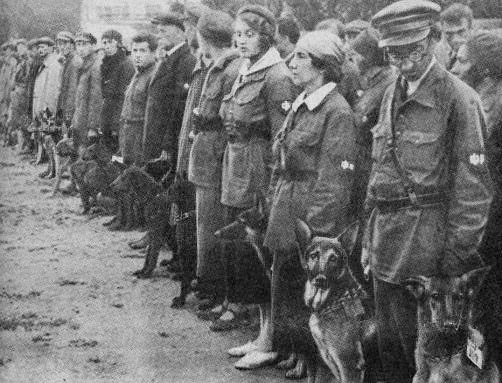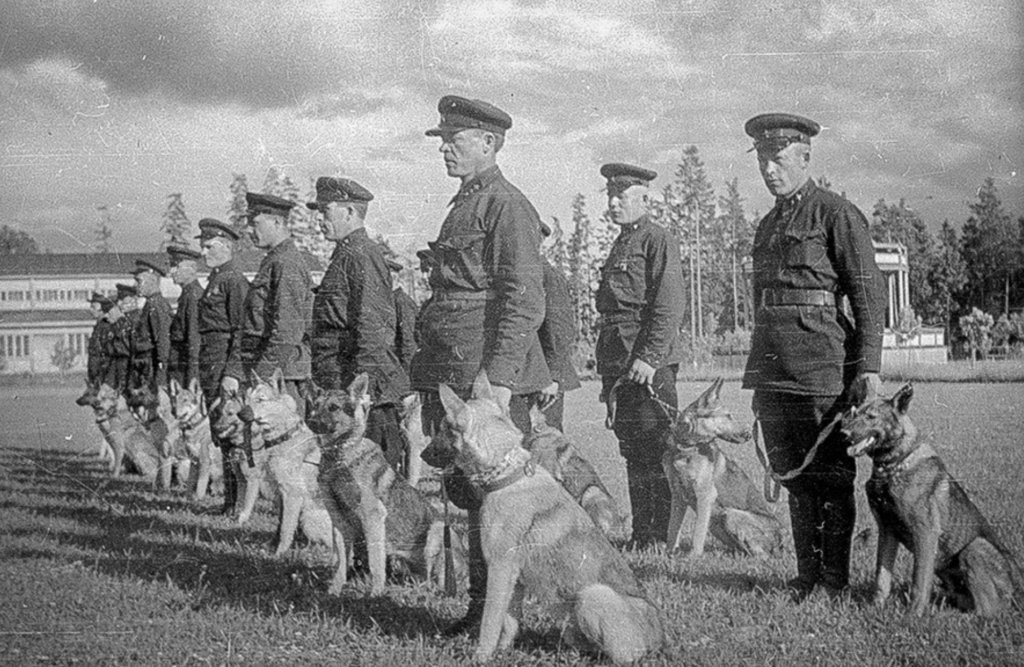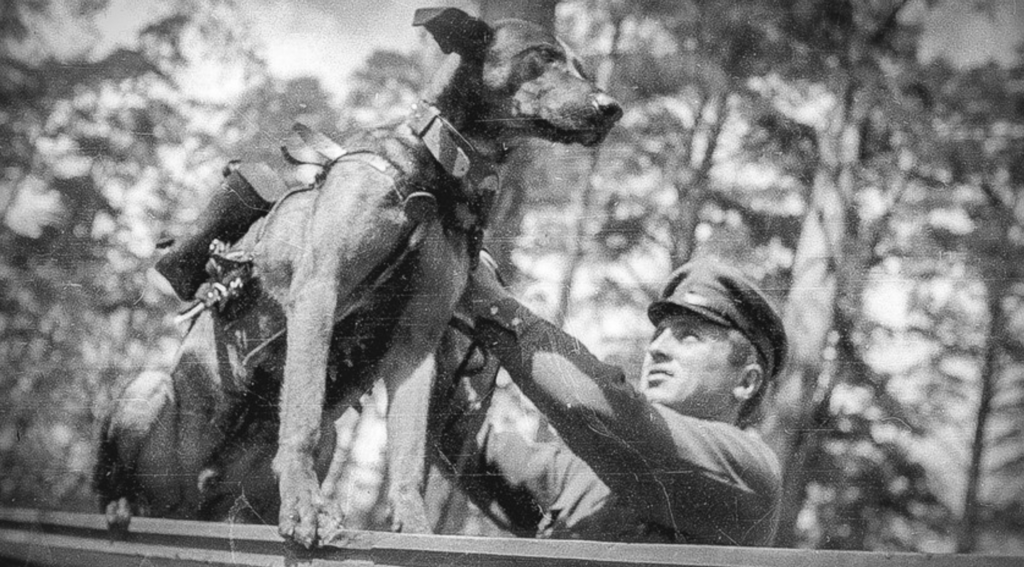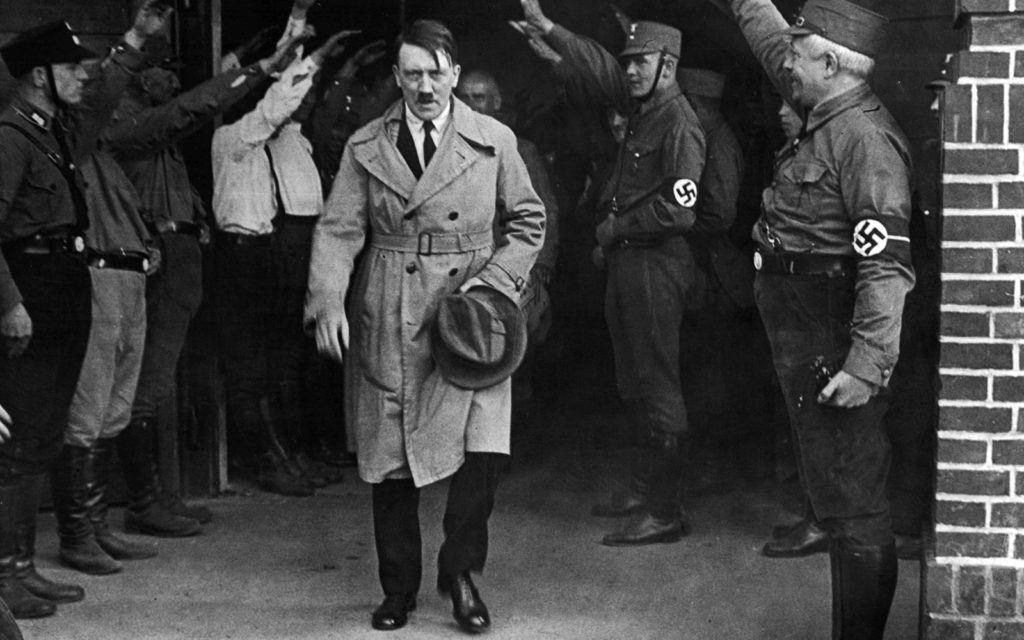These weren’t your everyday German Shepherds. These dogs were actual “soldiers” for the Soviet Union and played a role in the nation’s comeback victory over the Germans in World War II.
Anti-tank dogs were first trained in 1930 to carry out missions for the Soviets’ Red Army. Over 16 years, they were used for various purposes. Most notably was in the Soviet Union’s war with Germany in their home country from 1941 to 1943.
The dogs were trained at first to be rescue dogs but were eventually used for combat purposes. They placed detonated bombs in front of German tanks.
As the war dragged on, these dogs were then used as “suicide dogs.” They had bombs strapped on their backs after tactics to remotely detonate the bombs failed.
The dogs were seen as a success and a failure. It was a success in that it managed to help take out some German tanks and influence some battles. It was a failure, however, because many dogs were ineffective and even killed Soviet soldiers.

The Start of Training Dogs
Perhaps the Soviet Union could sense an upcoming conflict. After World War I, the government sought to put in place measures to deploy extra assistance should the country find itself in another wartime situation.
In 1924, the Revolution Military Council for the U.S.S.R. approved the military’s use of dogs for military purposes.
There were no specific guidelines on how to use them. But the consensus was they would be trained more for humanitarian and rescue efforts. This included providing first aid, transporting food, tracking enemy positions and weaponry, and helping fellow soldiers with tasks.
This philosophy changed in the 1930s when specialized training schools for dogs taught them how to plant bombs and even use themselves as mines. These dogs were taught how to climb under tanks and place the bombs or grenades.
During training, food would be put under the tanks to fool them into going under the tanks. As a training tactic, the Soviets would starve these dogs for days.
The Soviet Union was not in any conflict in the 1930s. Any training was used more in a “What If” scenario. Secretary Joseph Stalin wished to remain neutral in the growing crisis that was transpiring in Western Europe with Adolf Hitler and Germany.
However, in 1939, the war crept closer to the Soviet Union. The trained anti-tank dogs officially joined the Red Army.

The Soviets Enter World War II
“Blitzkreig” was taking Europe by storm. This was a term used to describe Germany’s rapid takeover and swift movement of the Nazi forces eastward into Poland.
But before Hitler invaded Poland, he signed a non-aggression pact with the Soviet Union. The pact made a promise that neither superpower would attack the other.
Stalin wanted to protect many of the Ukrainians and Belarusians living in Eastern Poland and also gain more land. Therefore, the two sides agreed to invade from opposite sides and share occupancy of the country.
On Sept. 1, 1939, the Germans invaded western Poland. This prompted England and France to declare war on Germany. Just two weeks later, the Soviets entered the battle by invading eastern Poland.
Thus, World War II had officially begun. Anti-tank dogs were not used during this conflict since the Polish army could not contain more than 450,000 Russian troops and nearly 5,000 tanks.
It was a swift and easy takeover for both Germany and the Soviet Union. Because of the pact, they shared control of Poland.
However, in June 1941, Hitler saw an opportunity to continue his expansion and take over all of Europe. He felt he had a stronger military than Stalin. Thus, they decided to invade Eastern Poland and subsequently, the Soviet Union.
Early on in this conflict, the Soviets were caught off guard and pushed back. This put them in a desperate state to save their country.
Using Anti-Tank Dogs
Desperate times called for desperate measures. This meant using anti-tank dogs to try and defeat the Nazis who had pulled within 10 miles of Moscow, the Soviet capital.
The Germans were also on the verge of taking over Stalingrad, which would have been a massive victory since it was a major industrial and transportation hub. Additionally, Stalin had named the city after himself.
But then the war changed as the German advance stalled. During conflicts, the Soviet military used anti-attack dogs to blow up German artillery and tanks.
These dogs would take detonated bombs from soldiers. They would then plant themselves in front of the tanks, setting off an explosion.
While this might appall animal activists, the desperate situation the Soviets were in at the time called for them to use whatever means necessary to try and hold off the Nazis. The future of the country was at stake.
Since these dogs were small, German tanks didn’t have tank guns that could aim that low to shoot the dogs. The Germans would use other tactics to take out the dogs, though, including throwing flamethrowers at them, firing at the dogs from trenches, or using the Luftwaffe planes to take them out.
Early on, the missions mostly failed. Dogs were trained to smell diesel, which was the smell of Soviet tanks. Meanwhile, German tanks used gasoline.
As a result, dogs placed the bombs in front of the wrong tanks, killing Soviet soldiers. Only four of the first 30 dogs used successfully blew up enemy tanks and artillery. Six, however, blew up Soviet tanks.
Another issue was that the Red Army didn’t have enough air cover to help the dogs as they crossed the battlefield. This made them easy targets for the enemy, especially from the air. The Red Army’s 1st Battalion was completely wiped out.
However, after the first barrage of failures, success followed as dogs were trained properly moving forward. They even became “suicide dogs.”
In July 1942, they helped the Soviets win the battle of Taganrov near the Sea of Azov. In one battle, 56 dogs launched an attack and took out several German tanks.
According to experts, 16 dogs could take out 12 German tanks. These dogs also blew up bunkers, artillery equipment, and enemy soldiers.

In 1941, more than 1,000 suicide dogs were deployed for war. By 1942, because of the success, more than 2,000 were beside the Red Army. The dogs played a major role in helping the Soviets win the Battle of Leningrad, where they destroyed tanks, bunkers, and an ammunition depot.
The Red Army was able to prevent the Germans from pushing forward anymore, and the cold, harsh winters began to take their toll on the enemy. The Soviets used the weather to their advantage. Eventually, the Germans had no choice but to retreat, signaling the beginning of the end for Hitler’s Germany.
By 1943, the Soviets had received an abundance of supplies and anti-tank weapons and were pushing the Germans back. The anti-tank dogs were no longer needed, and would never be used again. According to the Soviets, anti-tank dogs destroyed 304 enemy tanks.
References
Egorov, Boris. “Why Did the Soviets Use ‘Suicide’ Dogs To Blow Up Nazi Tanks?” Russia Beyond. 22 Aug 2018. https://www.rbth.com/history/329005-soviets-used-suicide-dogs.
Aneculaesei, Calin. “The Soviet Anti-Tank Dog.” HistoryofYesterday.com. 12 Sep 2022. https://historyofyesterday.com/the-soviet-anti-tank-dog/.

